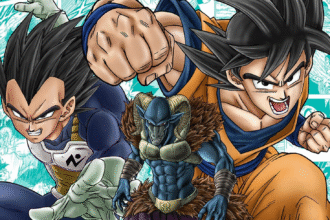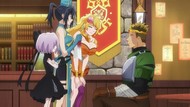In 1999, a new hero emerged from the pages of manga that would forever change the landscape of anime and pop culture. Masashi Kishimoto’s “Naruto” debuted in the 43rd issue of Shueisha’s “Weekly Shōnen Jump,” introducing readers to a world filled with ninjas, powerful jutsu, and a story of perseverance and friendship. Little did anyone know that this tale of a young, misunderstood ninja would resonate with millions and become a global phenomenon.
The Concept and Creation
Masashi Kishimoto created Naruto Uzumaki, a spirited young ninja with dreams of becoming the strongest leader of his village, known as the Hokage. Drawing inspiration from various sources, Kishimoto sought to combine traditional shōnen themes with a fresh narrative. At its core, “Naruto” explores themes of loneliness, acceptance, and the struggle for recognition—a storyline that mirrors Kishimoto’s own experiences in his formative years.
The series was initially conceived with a comedic tone, but as the story progressed, it evolved into a more complex narrative. Kishimoto’s artistry, combined with rich character development, allowed readers to connect deeply with Naruto’s journey.
Early Reception and Growth
Upon its introduction, “Naruto” garnered a mixed response. While some readers were captivated by the engaging plot and dynamic characters, others were initially skeptical about its potential longevity. However, as the issues rolled out, the buzz surrounding Naruto and his friends—Sasuke Uchiha, Sakura Haruno, and others—grew exponentially. The unique blend of action, humor, and emotional depth set “Naruto” apart, gradually building a dedicated fanbase.
Kishimoto’s art style, marked by dynamic action scenes and character expressions, significantly contributed to the manga’s appeal. The vivid depictions of jutsu and intense battles kept readers eagerly turning the pages.
Cultural Impact
As “Naruto” gained popularity, it transformed from a mere manga into a cultural touchstone. The anime adaptation, which premiered in 2002, brought the series to an even wider audience. The show maintained the essence of the manga while introducing new elements that appealed to both old and new fans.
The franchise spawned numerous spin-offs, movies, video games, and merchandise. “Naruto” became a defining series for an entire generation, inspiring countless manga artists and influencing storytelling in anime and comics worldwide.
The themes of friendship, rivalry, and perseverance resonated beyond Japan, making “Naruto” relatable across different cultures. The series’ universal message of overcoming adversity and the importance of bonds—kin and friendships alike—struck a chord with audiences, encouraging them to pursue their dreams regardless of the challenges.
The Legacy
As the manga concluded in 2014, and the anime wrapped up its original run shortly thereafter, “Naruto” left behind a legacy that continues to impact the industry. The sequel series, “Boruto: Naruto Next Generations,” explores the lives of Naruto‘s children and the new generation of ninjas, ensuring that the world Kishimoto built continues to thrive.
Today, “Naruto” stands as one of the best-selling manga series of all time, having sold over 250 million copies worldwide. It remains a testament to the power of storytelling and the ability to transcend language and cultural barriers.
Conclusion
The debut of “Naruto” in 1999 marked the beginning of an extraordinary journey that would shape the future of manga and anime. Kishimoto’s enduring tale of Naruto Uzumaki serves as an inspiration for dreamers across the globe, reminding us all that persistence, courage, and the bonds we forge are the true essence of heroism. As fans celebrate the series’ impact and reminisce about their favorite moments, Naruto continues to ignite the fires of imagination and hope for new generations.








